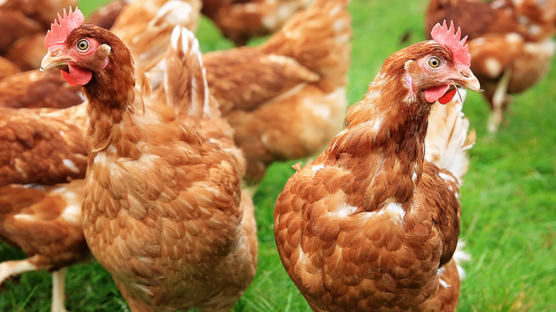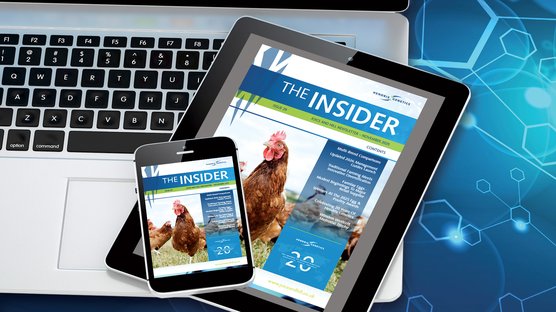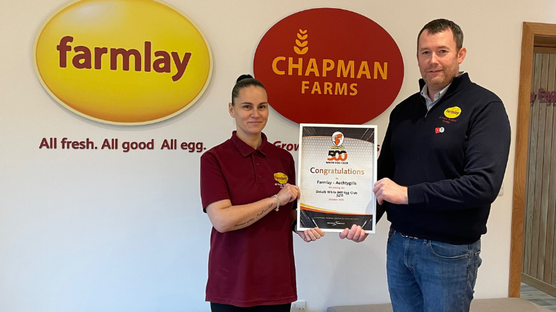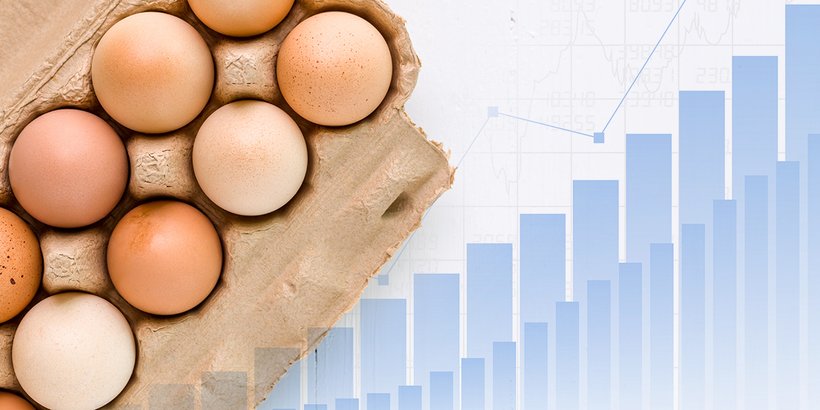
Published on Nov. 19, 2018
Achieving egg weight targets that match market trends
With our range of brands, finding the right genetics for your flock is easy with Joice and Hill. All of our breeds show a very quick rise in early egg size but genetically the Bovans Brown and ISA Brown give a greater number of larger eggs.
One of the
less well understood consequences of the way major breeding companies, such as
Hendrix Genetics, have responded to the demand for flatter and controlled egg
weight profiles is that increasing egg size nutritionally, has much less impact
than in the past.
However, through careful management producers can still make significant changes to egg weight in order to adapt to market demands. For example, by changing the age at sexual maturity, the body weight at start of lay and using appropriate lighting patterns it is possible to change egg weight by 1 to 3g.
Key advice for achieving higher egg weights
The key advice for achieving higher egg weights from breeds such as Bovans and ISA Brown, which are both genetically capable of laying large eggs, is to set the flock on this path from the start. There is no doubt that some breeds have a well-deserved reputation for laying larger eggs but producers may achieve better success in this regard by using the management techniques below on a trusted performer rather than by changing breeds and encountering other unexpected consequences.
Variability in sexual maturity
Sexual maturity changes according to variations in day length during the rearing period. With increasing day lengths, it is brought forward; with decreasing day lengths, it is retarded.
The purpose of lighting programmes is to control the age at start of lay and to avoid the influence of the variation in sexual maturity on performance (number and average weight of eggs)
Sexual maturity
The variation in sexual maturity is associated with considerable variations in the number of eggs produced as well as their average weight. This was studied in detail during the nineteen seventies, when lighting programmes were researched thoroughly. These effects, were demonstrated in trials carried out by Morris (1980) and Koutoulis (1997), who stimulated ISABROWN pullets at 8 weeks of age by increasing day length by 0, 4 and 8 hours.
They obtained a change in mean egg weight of 3g without changing the overall egg mass.
Egg weight increases by 1g, when sexual maturity is retarded by one week
These investigations showed that mean egg weight increases by 1g, when sexual maturity is retarded by one week. Compensating for this, the number of eggs was reduced or increased by about 4.5 eggs for each change of one week in age at start of lay. (See graph below or download PDF.)
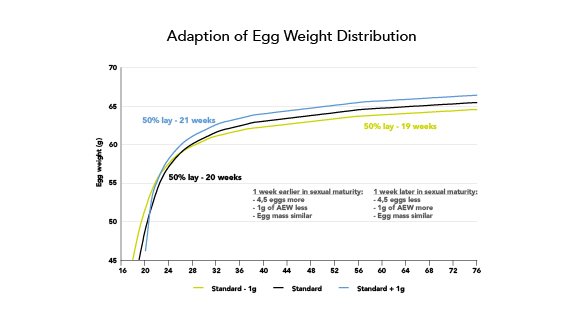
By using appropriate techniques, the age at start of lay can be changed so as to produce eggs of a weight required by the market without affecting the total egg mass-produced.
Instead of giving light stimulation as a function of age, we recommend that day length should only be increased, when the birds have reached the breeders intended body weight for the desired egg weight - preventing the birds coming into lay at too low a body weight, which would be detrimental to egg weight and to overall performance.
It is the variation in pullet body weight at sexual maturity, which can determine the average egg weight.
The variation in day length during the rearing period stimulates or retards the hormone production, which brings about the onset of sexual maturity.
The relevance of pullet body weight at sexual maturity
The body weight of the pullet at sexual maturity is the principle cause of variation in average egg weight. Changing sexual maturity is one method, which can be used to vary the body weight of pullets at start of lay. For brown egg strains, and particularly the ISABROWN, a strain on which a significant body of research has been carried out, a variation in pullet body weight of 80 g at sexual maturity will lead to a change in mean egg weight of about 1g.
Average bodyweight of 1550g at five per cent production at week 18 is an accepted standard. From this point bodyweight should increase in relation to the level of egg production as per the following table. (for guidance only)
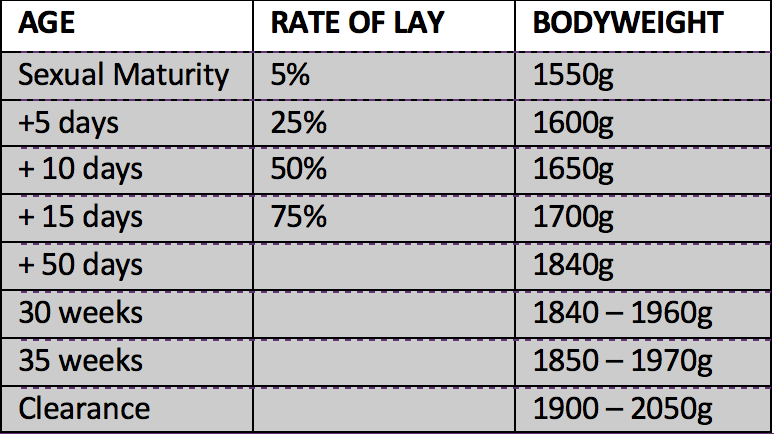
Pullets required to mature earlier than 18 weeks will need to achieve 1550g bodyweight earlier. In effect, this means proportionally higher bodyweights throughout the rearing period. Also, adult bodyweight will be achieved earlier.
Over the last 30 years sexual maturity of the modern hybrid has moved forward more than 6 weeks, as a direct result of genetic selection programmes. This natural progression requires that changes be made in management to ensure pullets are both physically and biologically ready for the earlier onset of egg production.Lighting during rearing
Sexual maturity will be delayed when a slow
step down light programme is used in rearing. This delay may be partially
compensated by earlier stimulus of light prior to lay. Research suggests that
the modern hybrid is less responsive to light increases. Once stimulated into
lay, further increases have little effect. Thus, the timing of the light
increase is most important.
Comparison of egg weights achieved by two flocks
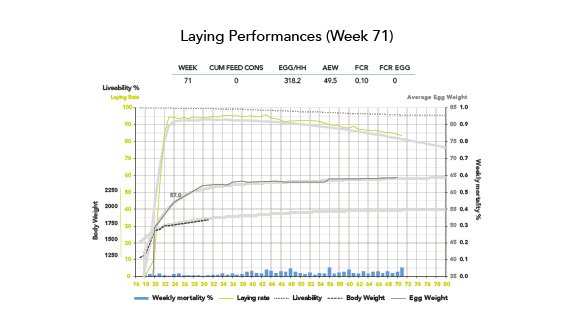
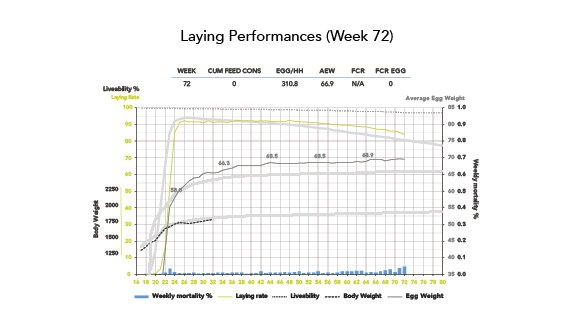
(PDF download at the top of this article)
Conclusion
A decision regarding the age at which sexual maturity occurs should be made at day old and the appropriate management regime adopted. This should take account the natural progression of sexual maturity as a direct result the breeding companies’ selection programmes, as well as individual market requirements. It is essential that all aspects of light, feeding and nutrition are considered together along with cost implications.

